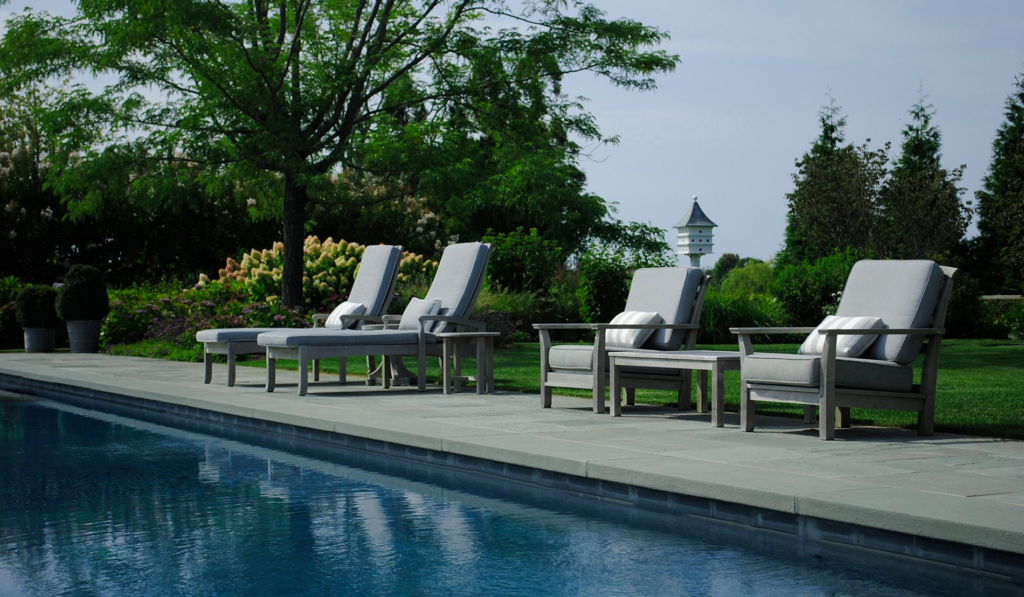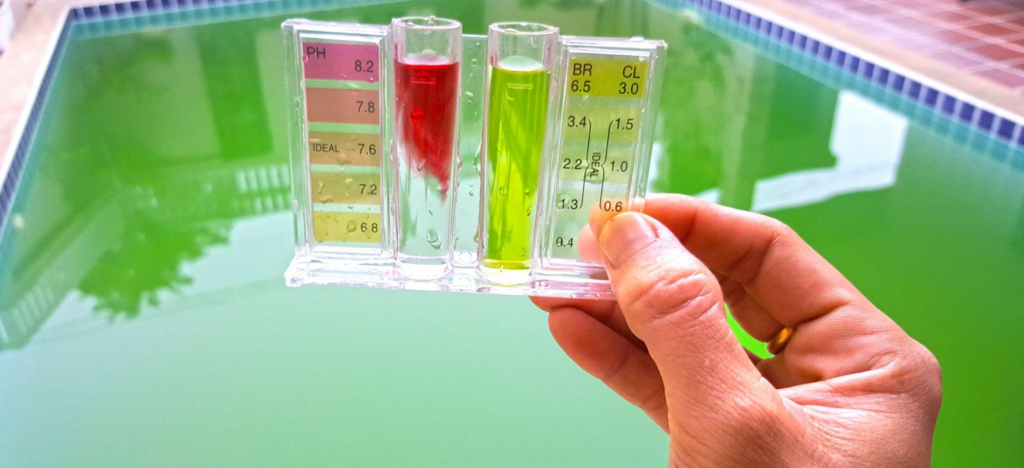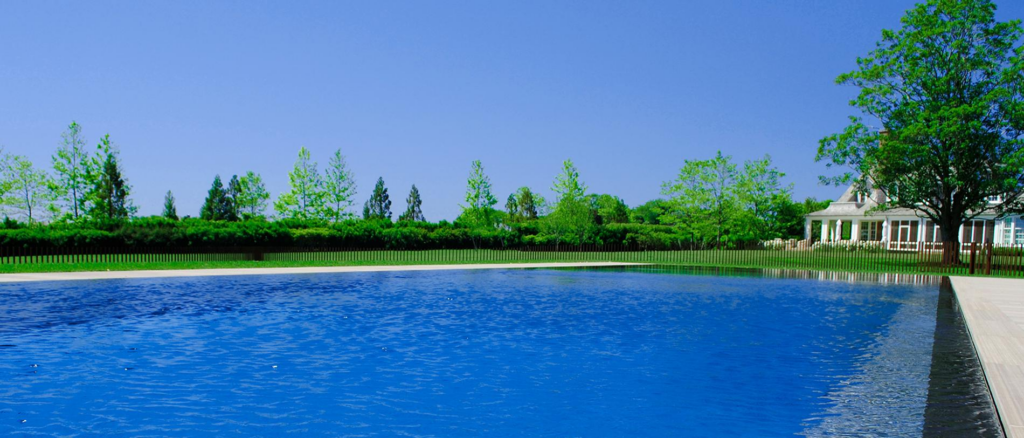
As a pool maintenance company servicing the Hamptons for over 42 years we have encountered every type of pool algae imaginable. Take it from us, there is definitely more than just one type of algae that grows in pools! The good news is that with the proper care and treatment protocol a professional pool maintenance company will help you keep your pool crystal clear and free from algae all summer long!
However, if you encounter pool algae, this blog explains how the three main types of algae develop and how you might work with your pool maintenance company to treat it. If you’re not sure if what you are dealing with is pool algae then take a read of our sister blog “Why Has My Pool Turned Green? What Do You Do If You Have Swimming Pool Algae?”for more general insight before reading ahead.

1. Green Algae: This is the most common type of pool algae and is usually caused by poor water circulation, low sanitizer levels, and inadequate filtration. Green algae is the most common algae a pool owner will encounter and it usually makes your pool water a cloudy green. In addition, the slimy consistency of the algae can also make the pool walls and floor slippery. No pool maintenance company would recommend swimming in your pool with this algae present and if you do find you have a green algae infestation your pool maintenance company will likely test the pool water, determine a treatment plan that will include scrubbing the walls and floor, and applying a green algaecide to the water (aka “shocking your pool”), then cleaning it again.
2. Yellow Algae: Also known as mustard algae, this type of algae is usually found in shaded areas of the pool and can be difficult to remove. It can make the pool walls and floor look yellow or brown, almost like sand is present in the pool, and can also cause a slimy feeling like the aforementioned green algae. Mustard algae are notorious for being chlorine-resistant, containing compounds that act as defense mechanisms against the oxidation efforts of sanitizers, helping them survive even in highly chlorinated conditions! It is highly recommended that if you experience this type of algae you hire a reputable pool maintenance company to help you get rid of it properly because your pool will likely need a superchlorinate solution or liquid bleach and take at least 1-2 days of constant filtration to clear.
3. Black Algae: This type of algae is the most difficult to remove and can grow in cracks and crevices of the pool walls and floor. It can make the pool walls and floor look black or blue-green and can cause a rough feeling to the touch, like running your hands over coarse sandpaper. In order to remove this type of algae, your pool maintenance company will use a fast-acting, concentrated algaecide that is specifically formulated to kill black algae and scrub the walls and floors of the pool with stainless steel bristles. This type of algae takes at least 24 hours to clear from your pool water.

In conclusion, there are several types of pool algae that can grow in your pool, but with proper maintenance and treatment, you can keep your pool clean and clear all season long. It’s also important to ensure your pool maintenance company applies preventative measures at least once a week during the summer. At Tortorella Pools we maintain our clients’ pools a minimum of twice a week, testing the water levels regularly, brushing the pool floors and walls, and maintaining proper water chemistry at all times. To speak to one of our pool maintenance specialists please call us at 631-728-8000.
